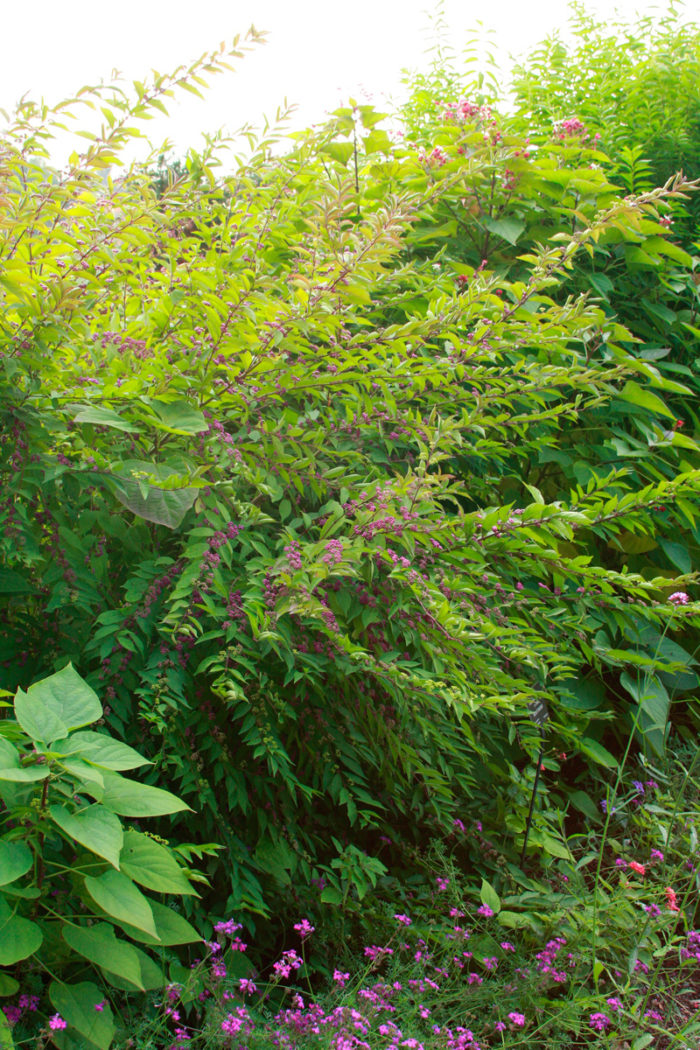
I have been accused of hating beautyberry. Looking at the amazing varieties in Andra Windorf Nus’s article (Beautyberry: Fall’s Most Fantastic Shrub), one might be hard-pressed to defend such an opinion. Fortunately, I don’t hate this shrub. I have, however, applied the same criticism that spring-blooming shrubs such as deutzia and forsythia get: They have one season of interest, but for the rest of the year they are do-nothing plants. Beautyberry spends most of the year seemingly just sitting there before it—eventually—sports its colorful berries.
If there is one opinion I will defend, it is the belief that doing nothing isn’t always a bad thing. If a bee shows interest in you, remain calm until the insect realizes you don’t have pollen, and it will move along. If you begin thrashing and flailing at it, the bee will defend itself. As a parent, I know that not every time I hear a sniffle or “It hurts when I do this” requires a trip to the doctor. When my lawn turns brown in the summer, I don’t break out the sprinkler. When cool temperatures and rain return in fall, it will turn green again.

The truth is often that what appears to be doing nothing is actually doing something (although my wife never buys this argument). If a guitarist is soloing, that doesn’t mean the other musicians are taking a cigarette break. They are playing the rhythm so that their bandmate can indulge his dreams of being the next Hendrix. And what might appear to be sleeping on the couch in front of a football game on TV is actually recharging one’s physical energy to apply to the next chore on the list (which might have to wait until next week, or whenever).
Beautyberry might appear to be doing nothing, but if you are a clever observer, you will notice that it is busy stopping your eye, keeping your attention on what is in front of it, and perhaps allowing an alluring glimpse of what is beyond. Before sporting its colorful berries, beautyberry is adding shape, texture, and color for other plants to play off of. In my garden, they form sizable round mounds that are the perfect backdrop for plants with a spiky or vertical habit—which I haven’t yet saved enough energy to plant.
So the next time you see a plant that looks like it is doing nothing, try to notice what it is doing and take advantage of it. Likewise, if your spouse is on the couch instead of hanging up the picture in the dining room like you asked, he might just be recuperating from the time and effort it took to find the tools for the job. How do you deal with such a person? Again, do nothing. He will do his thing eventually.
— Steve Aitken, editor
Fine Gardening Recommended Products

A.M. Leonard Deluxe Soil Knife & Leather Sheath Combo
Fine Gardening receives a commission for items purchased through links on this site, including Amazon Associates and other affiliate advertising programs.



















Comments
Log in or create an account to post a comment.
Sign up Log in